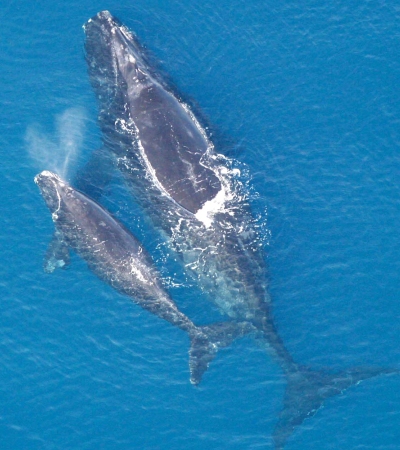Ship Strike Reduction Rule Aims to Protect North Atlantic Right Whales - October 8, 2008.
NOAA officials issued a regulation that will implement new measures to protect endangered North Atlantic right whales. The regulation will, for the first time, require large ships to reduce speeds to ten knots in areas where the whales feed and reproduce, as well as along migratory routes in between. The goal of the regulation is to reduce the risk of ship collisions with the whales.
"The ship strike rule, based on science, is a major addition to NOAA's arsenal of protections for this endangered species," said Navy Vice Admiral Conrad C. Lautenbacher, Jr., under secretary of commerce for oceans and atmosphere and NOAA administrator.

With only 300 to 400 in existence, North Atlantic right whales are among the most endangered whales in the world. Slow moving right whales are highly vulnerable to ship collisions, since their migration route crosses major East Coast shipping lanes. Along with existing measures to prevent entanglement of right whales in fishing gear, the new ship strike reduction rule is the most comprehensive approach that NOAA has taken in its effort to help right whales recover.
The new rule requires vessels to travel at ten knots or less during the seasons whales are expected to be present, in designated areas along the East Coast. It will be up for renewal in five years, after scientists assess its effectiveness. The rule will go into effect in early December, 60 days after publication in the Federal Register.
In the mid-Atlantic area, the 10-knot speed restrictions will extend out to 20 nautical miles around major ports. NOAA's Fisheries Service researchers report that approximately 83 percent of right whale sightings in the mid-Atlantic were within 20 nautical miles of shore. The rule also establishes temporary voluntary speed limits in other areas when an aggregation of three or more right whales is confirmed.
The rule is part of NOAA's broader ship strike reduction efforts. Existing protective actions include surveying whale migration routes by aircraft and mandatory ship reporting systems that provide advisories and information on right whale locations to mariners.
 Deep Sea Crabs
Deep Sea Crabs